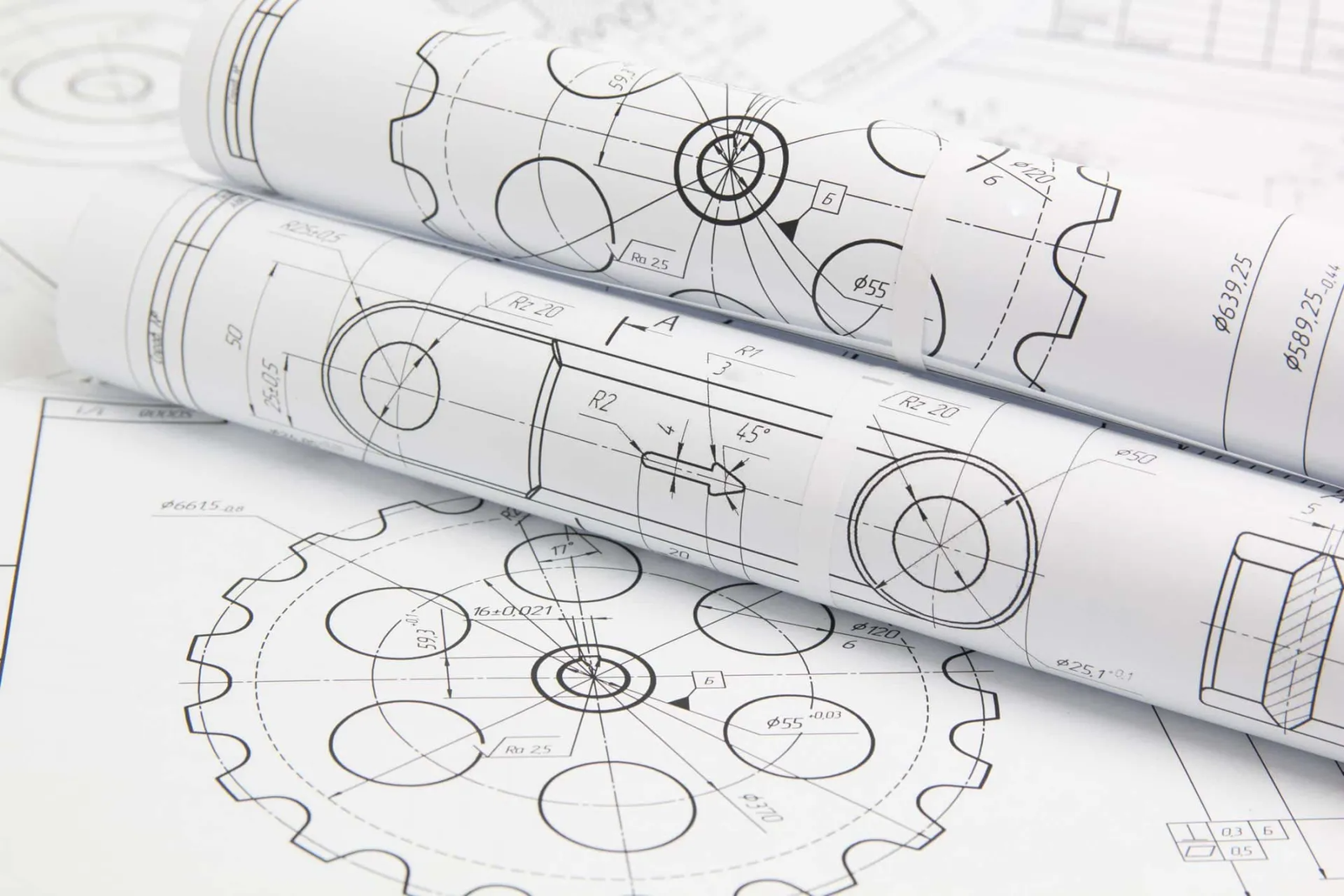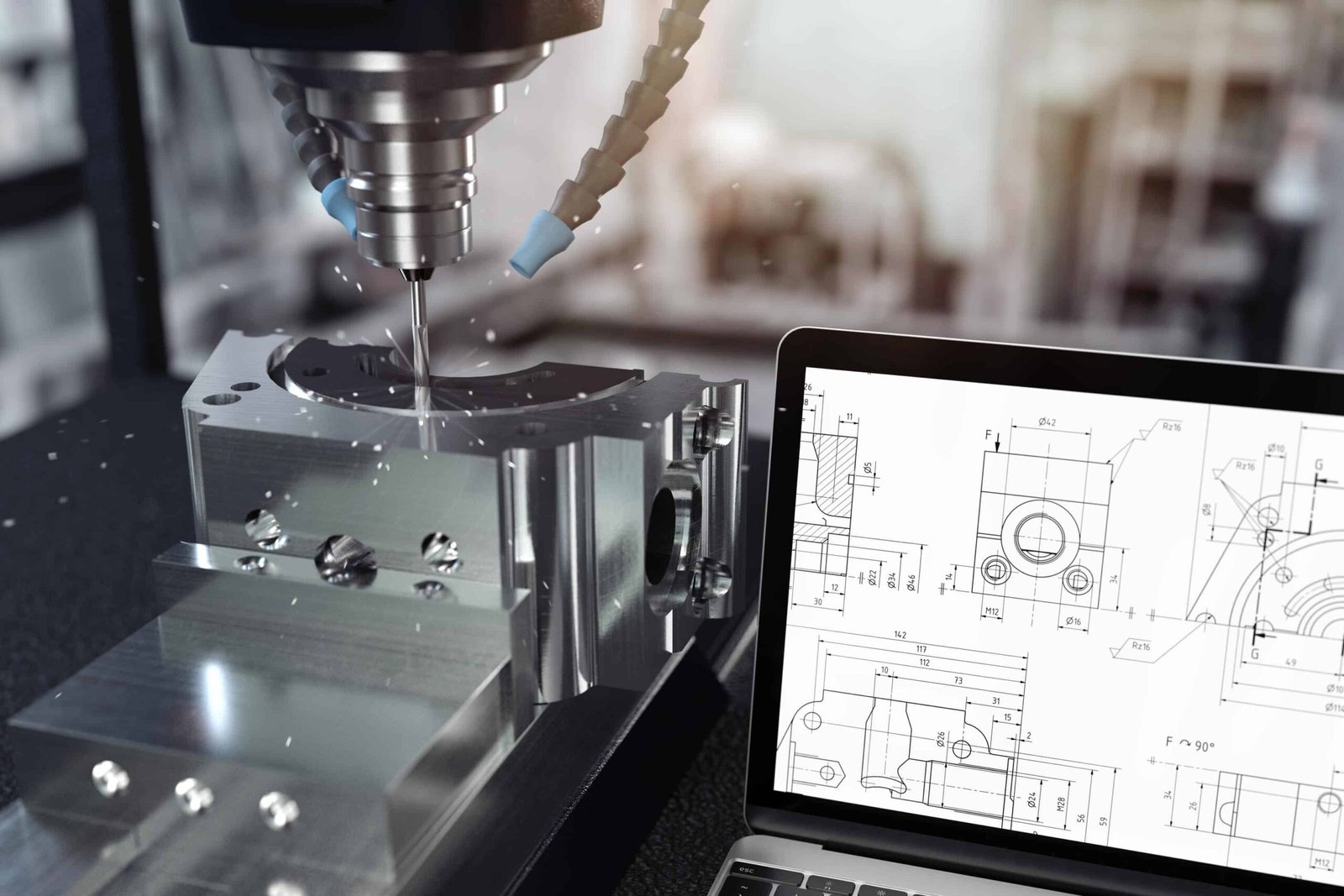Les dessins techniques sont un élément essentiel du processus de fabrication. Si vous produisez Pièces usinées CNC, composants en tôle, produits moulés par injection, ou pièces moulées sous pression — un dessin technique bien préparé garantit que votre conception peut être fabriquée avec précision.
Dans ce guide, nous couvrirons tout ce que les ingénieurs doivent savoir sur la préparation de dessins techniques professionnels pour la fabrication, y compris les normes de dessin, éléments clés, Conseils sur les logiciels de CAO, et exigences de dessin spécifiques pour différents processus de fabrication.
Pourquoi les dessins techniques sont-ils si importants dans la fabrication?
Considérez un dessin technique comme un manuel d'instructions détaillé pour fabriquer votre produit.. Il indique à l'usine:
À quoi ressemble la pièce sous tous les angles
La taille exacte de chaque fonctionnalité
Quels matériaux utiliser
Dans quelle mesure la surface doit être lisse ou rugueuse
Dans quelle mesure certaines pièces doivent-elles être serrées ou lâches pour s'emboîter
Sans ces détails, l'usine doit deviner – et deviner peut conduire à des erreurs, retards, ou frais supplémentaires.
Les dessins techniques aident à éviter des erreurs coûteuses
La fabrication est une question de précision. Même une petite erreur de taille ou de forme peut causer de gros problèmes, en particulier pour les pièces utilisées dans les machines., voitures, ou électronique. Les dessins techniques garantissent que tout le monde, de l'ingénieur à l'opérateur de la machine, est sur la même longueur d'onde..
Les dessins techniques sont un langage universel
Une autre raison pour laquelle les dessins sont importants est qu'ils utilisent des symboles et des règles standard que les employés des usines du monde entier comprennent.. Si vos pièces sont fabriquées en Chine, Allemagne, ou aux USA, un dessin technique approprié permet d'éviter les problèmes de communication.
Les dessins techniques aident à contrôler la qualité
Enfin, les dessins techniques définissent les normes de qualité de votre produit. Ils indiquent exactement au fabricant ce que vous attendez et vous donnent un élément de vérification lorsque les pièces finies arrivent..
En bref, si vous voulez que votre produit soit réalisé correctement du premier coup – dans les délais et dans les limites du budget – ne sautez jamais le dessin technique!
Normes internationales pour les dessins techniques
Les normes de dessin technique sont comme les « règles du jeu ». Ils s'assurent que peu importe où vos pièces sont fabriquées - en Chine, Europe, ou l'Amérique - tout le monde comprend les mêmes symboles, mesures, et lignes directrices.
Sans ces normes, chaque entreprise peut dessiner les choses différemment, conduisant à la confusion, erreurs, ou des retards de production.
Les deux normes les plus courantes à connaître
Il existe deux systèmes principaux utilisés dans le monde pour les dessins techniques:
Normes ISO (Organisation internationale pour la normalisation)
Utilisé principalement en Europe, Asie, et bien d'autres parties du monde.
Se concentre sur les unités métriques (millimètres, centimètres).
Comprend des directives pour les types de lignes, symboles, dimensionnement, tolérances, et plus.
Normes communes:
OIN 2768 (Tolérances générales)
OIN 1302 (Texture de surface)
Normes ASME (Société américaine des ingénieurs mécaniques)
Utilisé principalement aux États-Unis.
Se concentre sur les unités impériales (pouces) mais prend également en charge la métrique.
Norme bien connue: ASME Y14.5 — c'est le guide incontournable pour le dimensionnement et le tolérancement géométriques (DG&T), ce qui aide à contrôler la forme, taille, et position des caractéristiques sur une pièce.
Pourquoi les normes sont-elles si importantes?
Imaginez envoyer votre dessin dans une usine à l’étranger – si vous n’utilisez pas de format standard, les ingénieurs pourraient ne pas comprendre vos symboles ou instructions. Cela peut conduire à:
Mauvaises tailles de pièces
Mauvaises finitions de surface
Emplacements incorrects des trous
Échec des contrôles de qualité
Mais lorsque vous suivez les normes ISO ou ASME, tout le monde parle le même « langage technique du dessin ». Cela rend le processus de fabrication plus rapide, Plus facile, et plus précis.
Conseil pour les ingénieurs et les concepteurs
Vérifiez toujours quelle norme préfère votre fabricant avant d'envoyer vos dessins. Par exemple:
| Région | Norme commune utilisée |
| Europe/Asie | Norme ISO |
| États-Unis/Canada | Norme ASME |
Suivre les bonnes normes démontre du professionnalisme et permet d'économiser du temps et de l'argent pour vous et votre usine..
Éléments clés d'un dessin technique
Un dessin technique est plus qu'un simple croquis : c'est comme un manuel d'instructions détaillé pour fabriquer une pièce.. Chaque ligne, note, et le symbole a un but. Si quelque chose manque ou n'est pas clair, cela pourrait entraîner des erreurs ou des retards de production.
Décomposons les parties les plus importantes que tout bon dessin technique devrait avoir.
Bloc de titre
Cela se trouve généralement dans le coin inférieur droit du dessin.. Il fournit des informations de base comme:
Nom de la pièce
Numéro de pièce
Matériel
Échelle (quelle est la taille du dessin par rapport à la pièce réelle)
Date du dessin
Designer’s or engineer’s name
Revision history (shows if the drawing has been updated)
Think of the title block like the ID card of the drawing — it helps people know what they’re looking at.
Vues de la pièce (2D ou 3D)
Most drawings show different views of a part to give a complete picture. Common views include:
Front view
Top view
Side view
Section view (shows an inside cut)
Isometric or 3D view (optional but helpful)
Multiple views help the factory understand the shape, taille, and details of your part from every angle.
Dimensions
This is one of the most important parts of any technical drawing. Dimensions tell the factory exactly how big everything should be.
Typical dimensions include:
Length, largeur, height
Hole size and location
Thickness of walls
Radius or diameter of curves
Always use clear and accurate dimensions. If a factory has to guess — that’s bad news.
Tolérances
Tolerances tell the manufacturer how much variation is allowed in your part’s size.
Par exemple:
A hole size of 10mm ±0.1mm means the hole can be between 9.9mm and 10.1mm and still be OK.
Tolerances are important because no manufacturing process is perfect — parts always have small variations. But the tighter the tolerance, the higher the cost.
Symboles de finition de surface
These symbols show how smooth or rough a surface should be.
Par exemple:
A part that needs polishing or machining will have a surface finish symbol with a specific roughness value (like Ra 3.2μm).
Without these symbols, the factory won’t know if a surface should be rough, lisse, or shiny.
Notes et instructions spéciales
Parfois, you’ll need to add extra notes for things that don’t fit into the other categories. This could include:
Material requirements
Heat treatment instructions
Surface coating (like anodizing or painting)
Assembly instructions
Quality inspection requirements
A good drawing should answer every question before it’s asked.
No guessing. No assumptions. No mistakes.
Préparer un dessin technique avec un logiciel de CAO
If you’re new to CAD, you might be wondering — how do I actually make a good technical drawing?
Here’s a simple step-by-step guide to help you get started.
Étape 1: Commencez avec un modèle 3D
Before you even begin your 2D drawing, most engineers create a 3D model of the part in their CAD software (like SolidWorks, Autocad, or Fusion 360).
This 3D model gives you:
The correct shape of the part
Exact dimensions
A clear idea of how it will look and fit
Once the 3D model looks good, you can generate your 2D technical drawings directly from it. This saves a ton of time compared to drawing from scratch.
Étape 2: Ajouter différentes vues
After creating your 3D model, the next step is to insert 2D views into your drawing sheet.
Common views include:
Front view
Top view
Side view
Section view (if needed to show inside details)
3D or isometric view (facultatif, but helpful)
Choose the views that best show the important features of your part.
Étape 3: Ajouter des dimensions
Once your views are in place, it’s time to add dimensions. Be as clear and detailed as possible.
Remember to include:
Overall size (longueur, largeur, height)
Hole positions and sizes
Épaisseur de paroi
Radii and angles
Critical measurements that affect function
Conseil de pro: Don’t add too many unnecessary dimensions — only what’s needed for production.
Étape 4: Définir les tolérances
After adding dimensions, you should define tolerances — especially for important or high-precision features.
There are two ways to set tolerances:
Add specific tolerances next to a dimension
Ou, set general tolerances in the title block (Par exemple: ±0.1mm unless otherwise specified)
Be smart here — tight tolerances mean higher costs!
Étape 5: Ajouter des exigences en matière de matériaux et de surfaces
Suivant, tell the factory what material the part should be made of, and how the surface should look or feel.
Exemples:
Matériel: Aluminium 6061, Acier inoxydable 304, ABS Plastic
Finition de surface: Machined surface Ra 3.2μm
Revêtement: Anodisé, Painted, Brillant, etc..
This information can go into the title block or as a separate note.
Étape 6: Ajouter des notes et des instructions spéciales
Sometimes there are details that don’t fit in the main drawing — like:
Traitement thermique
Assembly instructions
Surface treatment details
Quality inspection standards
Packaging requirements
Add these as clear notes on the drawing.
Étape 7: Vérifiez tout soigneusement
Before sending your drawing to the factory, double-check everything:
Are all the important views included?
Are the dimensions correct?
Are the tolerances reasonable?
Is the material specified?
Are all special instructions clear?
Mistakes in the drawing = Delays, Coût plus élevé, or bad parts.
The best technical drawings are easy to understand — even for people who don’t speak your language well.
Avoid unnecessary details. Use standard symbols. And always think from the factory’s point of view.
A clear drawing saves time, argent, and stress for everyone.
Exigences spécifiques pour différents processus de fabrication
Different manufacturing methods need different kinds of information on your technical drawing.
Décomposons-le de manière simple.
Dessins d'usinage CNC - Ce qu'il faut inclure
CNC machining uses cutting tools to remove material from a block of metal or plastic.
What factories want to see in your drawing:
Exact dimensions of every feature
Tolerances for holes, machines à sous, platitude, etc..
Finition de surface (Par exemple, Ra 3,2 μm)
Threads and tapped holes (with standard callouts)
Type de matériau
Any special machining requirements (like sharp edges, chamfers, or deburring)
Conseil de pro: Only add tight tolerances where it really matters. It can get expensive fast!
Dessins de tôlerie – Ce qu'il faut inclure
Sheet metal parts are made by bending, Coupe, and punching flat metal sheets.
What to show on your drawing:
Flat pattern view (before bending)
Bend lines and directions
Bend radius and angles
Hole sizes and positions
Material thickness
Surface treatment (like powder coating or anodizing)
Conseil de pro: Remember that bending metal slightly stretches or compresses the material — so add a note about bend allowances if needed.
Dessins de moulage par injection – Ce qu'il faut inclure
Injection molding is for plastic parts made by injecting molten plastic into a mold.
Important things to show:
Angles de projet (usually 1°–3°) to help release the part from the mold
Épaisseur de paroi (uniform thickness is best)
Ribs and support structures for strength
Gate and ejector pin locations (si nécessaire)
Type de matériau (abdos, PC, Nylon, etc.)
Finition de surface (brillant, mat, texturé)
Conseil de pro: If you’re not sure about draft angles or mold design, ask the factory for advice — they do this every day.
Dessins de moulage sous pression – Ce qu'il faut inclure
Die casting is used for making metal parts (like aluminum or zinc) with complex shapes.
Key details to add:
Angles de projet (similar to injection molding)
Épaisseur de paroi (avoid too thick or too thin)
Fillets or radii to avoid sharp corners
Type de matériau (Aluminium ADC12, alliage de zinc, etc.)
Finition de surface (as-cast, shot blasted, peint)
Any machining areas after casting
Conseil de pro: Die casting parts often need extra machining for precision surfaces — show this clearly in your drawing.
Every manufacturing process has its own rules.
Before you send your drawing, demandez-vous:
“If I were making this part with this process, what would I need to know?"
Clair, simple drawings help the factory make your parts faster, moins cher, Et avec moins d'erreurs.
Derniers conseils pour les ingénieurs
Technical drawings are the foundation of successful manufacturing. A well-prepared drawing ensures your parts are produced correctly, rapidement, et dans le budget.
By following international standards, using proper CAD techniques, and customizing drawings for specific manufacturing processes, engineers can avoid costly mistakes and deliver high-quality products.
Liens internes:
Ultimate Guide to CNC Machining
Explication des bases du dessin technique
Injection Molding vs CNC Machining: Quelle est la différence?
Understanding Surface Finishing in Manufacturing





